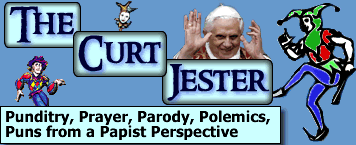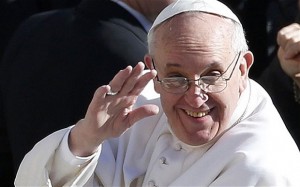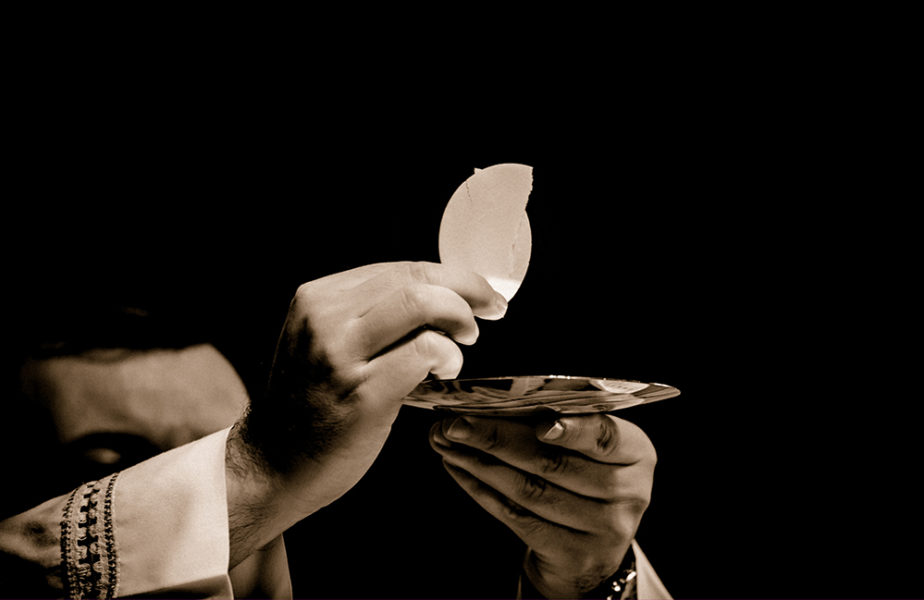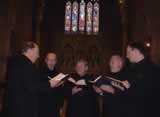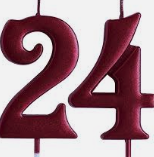The Weekly Francis is a compilation of the Holy Father’s writings, speeches, etc., which I also cross-post on Jimmy Akin’s blog.
This version of The Weekly Francis covers material released in the last week, from 5 April 2023 to 11 April 2023.
General Audiences
Homilies
- 6 April 2023 – Holy Chrism Mass
- 6 April 2023 – Mass of the Lord’s Supper (Prison for Minors ‘Casal del Marmo’, Rome)
- 8 April 2023 – Easter Vigil in the Holy Night of Easter
Messages
Regina Caeli
Papal Tweets
- “During these holy days, let’s draw near the Crucified One. Let’s place ourselves before him, stripped, to take an honest look at ourselves, removing whatever is superfluous. Let’s look at him, wounded, and place our wounds in his. Let’s let Jesus regenerate hope in us. #HolyWeek” @Pontifex, 5 April 2023
- “Without the Lord’s Spirit, there can be no Christian life. Without his anointing, there can be no holiness. It is fitting that today, on the birthday of the priesthood, we acknowledge that He is at the origin of the ministry, the life and vitality of every Pastor. #HolyThursday” @Pontifex, 6 April 2023
- “On the cross, Jesus refused to yield to despair, but he prayed and entrusted Himself to the Father. In His abandonment, he continued to love and forgive His crucifiers. Jesus, in His abandonment, asks us to see and have a heart for the many ”abandoned Christs“.” @Pontifex, 7 April 2023
- “#ViaCrucis #GoodFriday U Image” @Pontifex, 7 April 2023
- “Today the power of Easter calls you to roll away every stone of disappointment and mistrust. The Lord is an expert in rolling back the stones of sin and fear. He wants to illuminate your sacred memory, your most beautiful memory, to make you relive your first encounter with him.” @Pontifex, 8 April 2023
- “Let us revive the beauty of that moment when we realized that he is alive and we made him the Lord of our lives. Let us return to Galilee. Let each of us return to his or her own Galilee, to the place where we first encountered him. Let us rise to new life!” @Pontifex, 8 April 2023
- “Let us make haste to surmount our conflicts and divisions, and to open our hearts to those in greatest need. Let us hasten to pursue paths of peace and fraternity.” @Pontifex, 9 April 2023
- “To rise again, to start anew, to take up the journey, we always need to return to Galilee, that is, to go back to the living, concrete and palpable memory of our first encounter with him.” @Pontifex, 9 April 2023
- “#Easter yeultk Image” @Pontifex, 9 April 2023
- “Jesus, the Living One, is with us, forever. Let the Church and the world rejoice, for today our hopes no longer come up against the wall of death, for the Lord has built us a bridge to life.” @Pontifex, 9 April 2023
- “May we allow ourselves to experience amazement at the joyful proclamation of Easter, at the light that illumines the darkness and the gloom in which, all too often, our world finds itself enveloped.” @Pontifex, 9 April 2023
- “The #GospelOfToday lets us relive the women’s encounter with the Risen Jesus on Easter morning. Jesus meets them while they are going to announce him. This is beautiful: when we proclaim the Lord, the Lord comes to us. #Easter” @Pontifex, 10 April 2023
- “When hope is spent and we feel loneliness in our hearts, inner weariness, the torment of sin, the fear of failure, let us return to Jesus. For He is the only one who always defeats death and always renews our life. #Easter” @Pontifex, 11 April 2023
Papal Instagram
